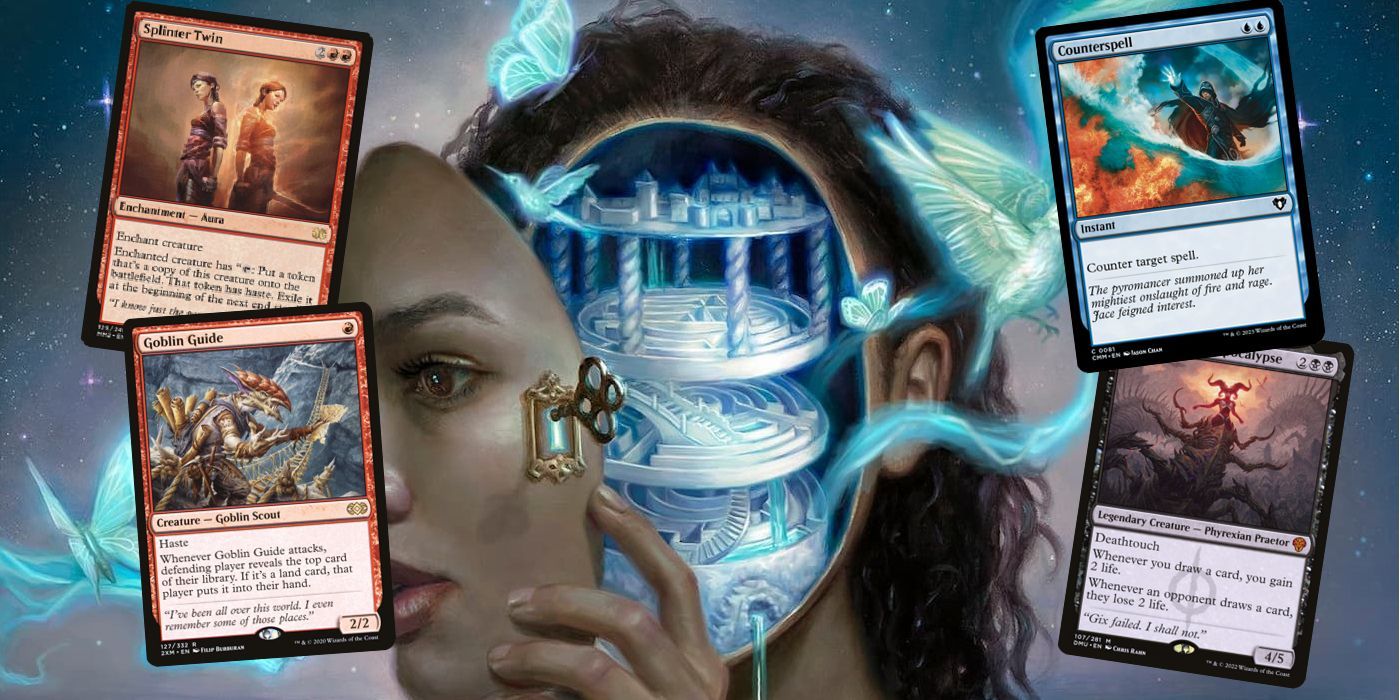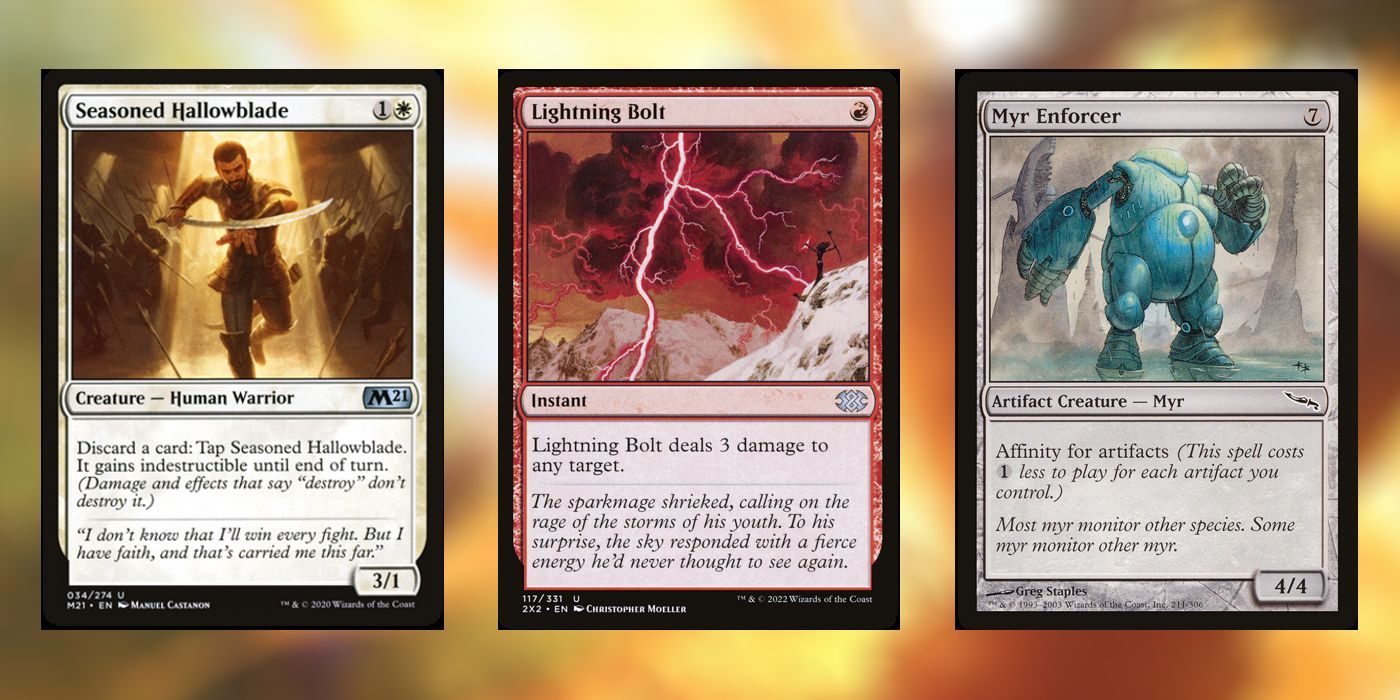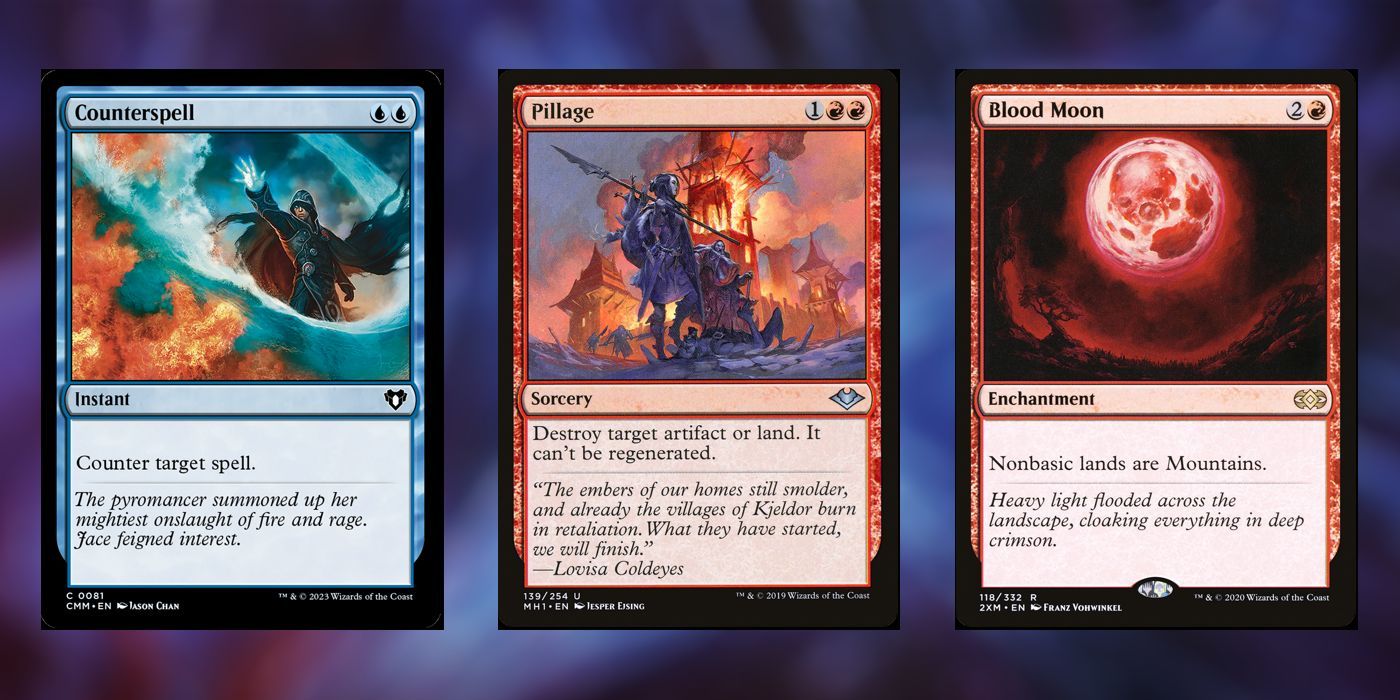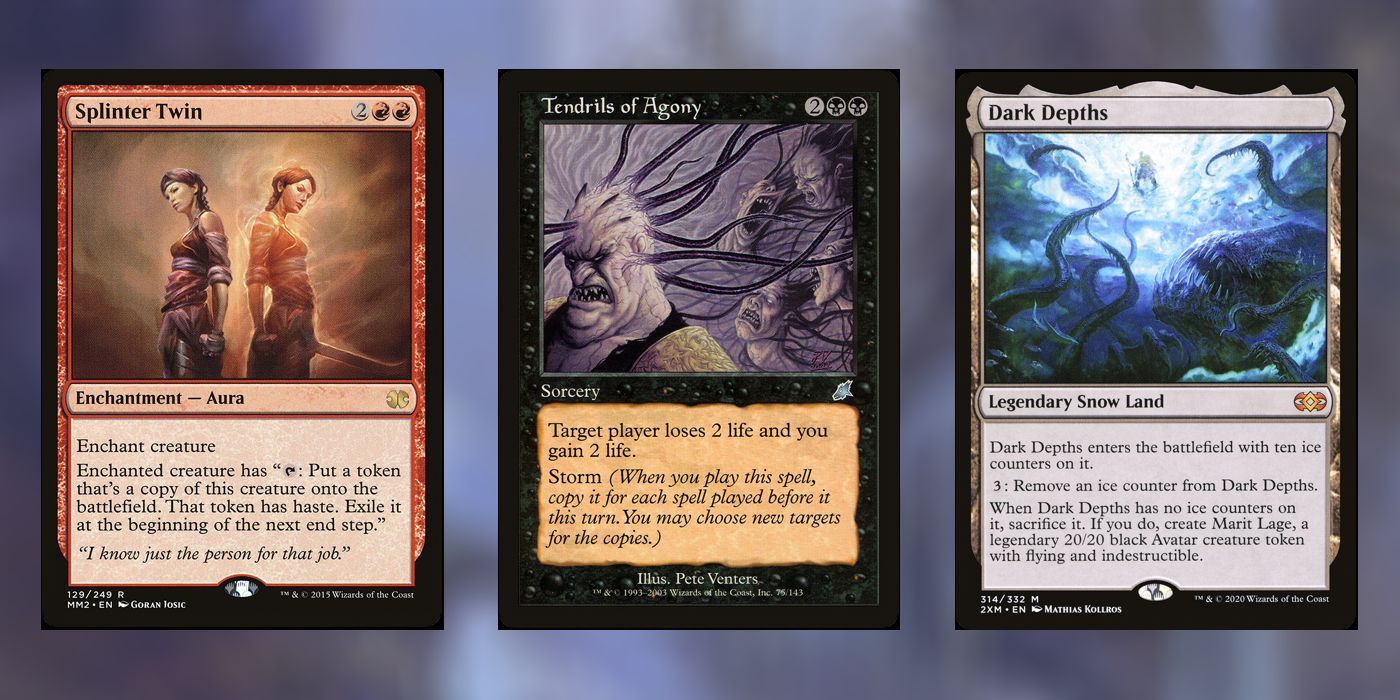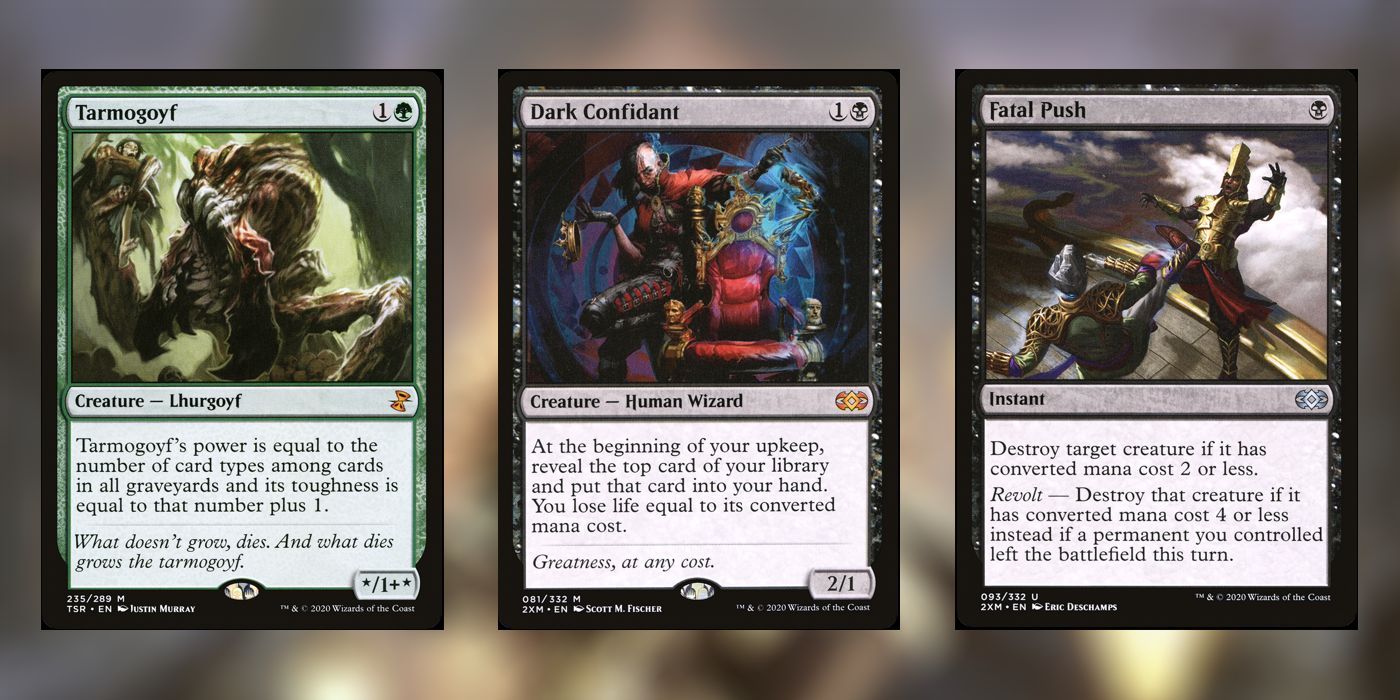Magic: The Gathering has many deck archetypes, but four of these archetypes serve as the broadest categories of deck, informing its strategy and composition. Combo, Aggro, Midrange, and Control are four of the broadest MTG deck archetypes and are exceptionally useful in defining what a deck's main goal is.
There is some crossover between the archetypes, with some Combo-Aggro decks or Combo-Control decks, but in general, most Magic decks in 60-card constructed formats can be sorted into one of the four main categories. It's important to learn each of these archetypes in deck building and playing Magic because they describe a deck's win state, which means understanding a deck's archetype is a key part of understanding counterplay against it. This guide will help in understanding the basics of these archetypes.
Aggro
Aggro is the simplest of the deck archetypes, but it's also the most reliable and consistent. Aggro aims to either overwhelm opponents with threats or deal consistent damage that opponents struggle to deal with profitably. Their methods of removing creatures or preventing damage should, ideally, be more expensive or unwieldy than the threats themselves. Aggro does a lot with the principle of the Mana Curve, which is the idea of maximizing the amount of mana spent on each turn. Most aggro is constructed to have something to do in most cases with all their mana on each of the game's earliest turns.
An example of an Aggro deck is the "White Weenie" deck archetype. These decks use the cheaper creatures in white to deal consistent damage and overwhelm an opponent in the critical first few turns of the game. These decks also often include anthem effects, which increase the power of creatures to defeat the opponent faster. Burn decks are another example that deals a lot of damage in the early game with instants, sorceries, and cheap creatures, allowing them to potentially finish an opponent off in the later turns. Even if a player manages to stabilize against a Burn deck, there is always the threat of damage coming from an instant or sorcery. There are also the "all in" aggro decks like Affinity, which aim to present an unbeatable board state and deal lethal damage to their opponents incredibly quickly, but often lack any staying power if they fail to defeat their opponent.
Some decks struggle to counter Aggro's game plan because almost all Aggro is built to be resistant to what is called "one for one" answers. Removing Aggro's creatures is often less effective as they cost less mana than the removal, they have more redundant creatures than their opponents have removed, or they have already had an effect on the game with enter-the-battlefield effects or haste. The better approach, then, is to use mass removal to sweep away all the creatures on the board at once. Alternately preventing the Aggro player from attacking altogether with a bigger blocker is another viable strategy. Buying enough time for the player's own deck to take effect, which is often the best way for combo decks to win Aggro matchups, is another viable strategy.
Control
The opposite of the Aggro archetype, Control decks play a slower and more reactive game plan that involves commanding the game through various methods. Control decks don't necessarily counter every spell and remove every creature, even though it can feel like that sometimes — instead, they interact with key elements of the opponent's game plan to slow them down to the point where the Control deck can exercise its full power. Ideally, the Control player gets their opponent to the point where they can no longer meaningfully do anything to advance their own win conditions or prevent the Control player from winning. Control decks play a lot of card advantage spells to ensure they are ahead of their opponent. Control is explicitly a late-game deck that intends to stretch out the game as long as possible.
The stereotypical control deck is a blue deck with plenty of counterspells, removal, and card draw, but there is more to the archetype than the decks that get labeled "Control." Decks that focus on land destruction put opponents behind on mana and prevent them from doing anything meaningful in the early turns, or at all in the case of some Armageddon-style mass land destruction decks. Then there are the "Prison" or hatebear decks, which seek to put a lock on the game with key pieces that constrict the potential of an opponent's cards, such as enchantments that prevent an opponent from attacking, make them pay extra for spells or weaken their creatures. Prison decks often have to tailor their prison pieces to the meta in which they are playing. Blood Moon, for example, is very useful in a format like Modern with a lot of Nonbasic lands. Hatebears are prison pieces that happen to be creatures.
Control decks thrive when they don't even have to use their cards to control their opponents, who may be reluctant to attempt to cast spells into potential counterspells or removal. In general control decks struggle to deal with threat quantity and speed. There are aggro decks that are too quick for the control deck to deal with or that have threats that are too numerous or resilient. Some Combo decks can also be too fast for the Control deck. Otherwise, the counterplay to any particular control deck can be very particular to that deck's sub-archetype. Prison decks can be fought with removal, land destruction can be fought with nonland ramp and traditional control can be fought with "can't be countered" spells or creatures with flash that can be cast after they use their mana.
Combo
Combo aims to win the game in one single turn. To do this they use very powerful synergies known as "combos" which are combinations of two or more cards that work together in unintended ways to create extremely powerful effects. Certain combos can provide infinite mana, infinite damage or even allow for someone to draw their entire deck. There's much debate as to what qualifies as a "combo" and whether the combo has to win the game on the spot. Some decks that fit under the Combo umbrella are really just very strong synergies that put one in a nigh unbeatable position but don't necessarily win the game immediately. Notably, even infinite combos are not truly infinite, as Magic rules prevent players from stalling the game infinitely and prevent players from doing literally "infinite" damage, so in most cases, infinite combo players choose an arbitrarily high number.
Combo decks are perhaps the most varied of the archetypes and are generally very hard to put into subcategories. The most famous example of a combo is Splinter Twin, which involves getting the aura Splinter Twin, which taps to create a copy of the creature it's attached to, on a card like Deceiver Exarch or Pestermite which can untap a permanent when it enters the battlefield. This combo generates an army of infinite Pestermites, as the new ones can simply untap the original. Another example of a combo deck that may not necessarily win the game on the turn the combo hits is Dark Depths, which involves turning the namesake land into a 20/20 flying monster. Storm also acts as a combo deck, aiming to cast a critical mass of spells in a single turn to take advantage of the Storm mechanic, a Magic: The Gathering gameplay feature so powerful it will likely never be reprinted.
Combo decks are generally easily disrupted by using a key piece of interaction, removal, discard, or counterspell to hit a combo piece. There are also certain silver bullet cards that target certain combos. Graveyard-based combos will be disrupted best by graveyard hate which can exile cards from the graveyard. Certain creatures, enchantments, or artifacts may stop combos by virtue of their particular effects, like cards that restrict players to casting only one spell per turn on Storm.
Midrange
Midrange is an interesting archetype as it combines factors important to two other archetypes. Firstly it combines the consistency and pressure of an Aggro deck with the answers and slower pace of a control deck. If aggro plans to dominate the early game and control plans to dominate the late game then Midrange is best in the midgame. To do this, Midrange employs efficient answers, often removal, combined with high-quality threats. Midrange plays with cards of higher quality, aiming to outvalue the opponent with powerful cards once they've prevented their opponent from taking the initiative in the early game. Midrange decks often prefer to play with singularly powerful cards rather than having synergistic cards. Midrange decks also tend to be the most expensive and benefit a lot from products that print directly into older formats like Modern Masters.
Jund is the classic example of a Midrange deck, playing powerful threats in the form of Tamogoyf backed up with strong removal options like Fatal Push and Bolt. Even a small smattering of card advantage in the form of Dark Confidant or Bloodbraid Elf gives the Jund deck an edge as the match progresses to the midgame. In general, Midrange decks have a little bit of everything from control and aggro but don't have a lot in common with the synergy-based combo decks.
Midrange generally works against nearly every kind of deck with very few bad matchups. They often have enough removal to snipe key combo pieces, their creatures tend to blunt aggro offensives, and they have enough redundancy and card advantage to deal with control. However, they also don't necessarily excel in any one of those particular matchups. Midrange is the "Jack of All Trades" deck, but as a result, it is also a master of none.

